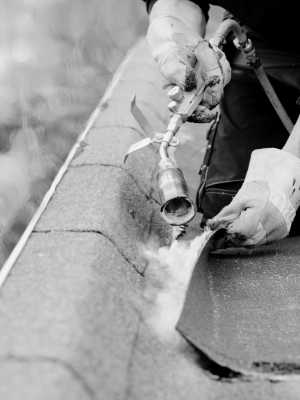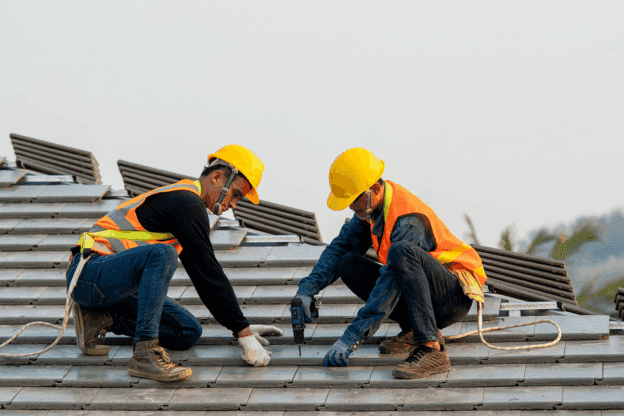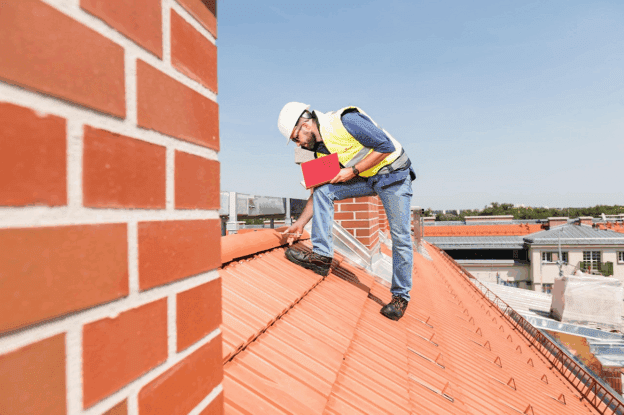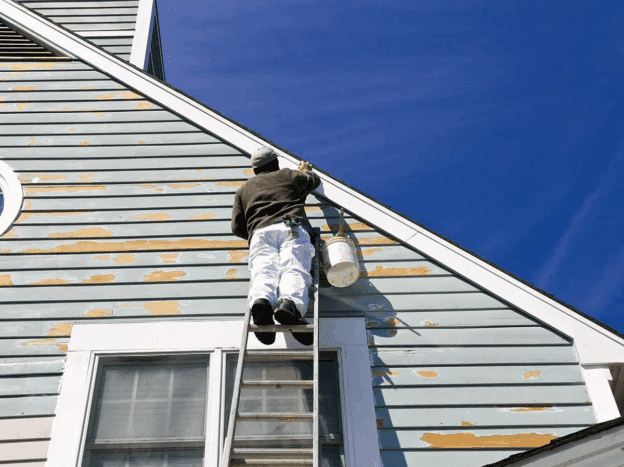
Maintenance Tips for Flat Roofing to Prevent Common Issues
Flat roofing offers a sleek and modern look, but without proper upkeep, it can quickly turn into a maintenance headache. Flat roofing systems, while popular for their simplicity, are prone to specific issues such as ponding water, leaks, and membrane damage. Regular maintenance is essential to ensure longevity and performance.
Understanding how to manage these common problems can save significant time and money. Simple actions like routine inspections, cleaning debris, and checking for signs of wear can make a huge difference.
Key Signs Your Flat Roofing Needs Attention
Recognising the early signs of damage can prevent major issues with flat roofing. Monitoring these indicators helps in addressing problems promptly, saving time and money in the long run.
- Water Stains on Ceilings: Discolored patches or water stains on the ceiling often signal leaks or water damage in the flat roofing system, necessitating immediate inspection and repair.
- Pooling Water: Persistent water accumulation on the roof can lead to deterioration and leaks. Ensure proper drainage and address any blockages or structural issues causing water to pool.
- Cracks or Blisters: Visible cracks or blisters on the roofing membrane indicate potential damage. These areas need prompt repair to prevent water infiltration and further damage.
- Debris Accumulation: Leaves, branches, and other debris can block drainage systems and cause water to pool. Regularly remove debris to maintain proper roof function and prevent damage.
- Unusual Odors: Foul or musty smells emanating from the roof area may indicate mold or trapped moisture. Investigate and resolve the source to prevent further issues.
By staying vigilant and addressing these signs early, flat roofing can be maintained effectively, avoiding costly repairs and ensuring long-term durability.
Effective Strategies to Prevent Ponding Water
Ponding water is a significant concern for flat roofs, as it can lead to various issues such as leaks and roof degradation. One effective strategy to prevent ponding is ensuring proper drainage systems are in place. Roof drains, scuppers, and downspouts must be clear and functional to facilitate water flow off the roof.
Installing tapered insulation can also help, as it promotes better water runoff by creating a slope. Additionally, routinely checking for debris and cleaning the roof surface helps prevent blockages that could obstruct water flow. Addressing these issues proactively will significantly reduce the risk of ponding water and its associated problems.
Essential Tools for Flat Roofing Care
Maintaining a flat roof requires specific tools to ensure the job is done correctly and efficiently. A quality roof brush or broom is essential for removing debris and leaves that can obstruct drainage systems. A pressure washer can be useful for deep cleaning the roof surface and removing stubborn stains.
For inspecting and repairing minor issues, having a reliable roofing repair kit, which includes sealants and patches, is crucial. Safety equipment such as harnesses and non-slip footwear also plays a vital role in ensuring safe access to the roof. By having these tools on hand, maintaining a flat roof becomes more manageable and effective.
How to Spot Early Signs of Damage
Detecting early signs of damage on your flat roof can prevent costly repairs and extend its lifespan. Regular inspections help identify potential problems before they escalate.
- Cracks and Splits: Check for visible cracks or splits in the roofing material. These can indicate structural issues or damage that needs prompt attention to prevent leaks.
- Pooling Water: Look for areas where water collects on the roof. Ponding water can cause deterioration of the roofing materials and lead to leaks or other damage if not addressed.
- Blisters and Bubbles: Inspect for blisters or bubbles on the roof surface. These usually signal trapped moisture or faulty installation that could compromise the roof’s integrity.
- Stains and Discolouration: Inside the building, monitor for water stains or discolouration on walls and ceilings, which often indicate leaks originating from the roof.
- Damaged Seams and Edges: Examine the seams and edges of the roof for any signs of separation or wear. Properly maintained seams are crucial for preventing water infiltration.
Identifying these signs early can save time and money on repairs. Regular inspections and prompt action are key to maintaining a well-functioning flat roof.
Importance of Regular Flat Roofing Inspections
Regular inspections are crucial for the upkeep of flat roofing. Over time, weather conditions and general wear and tear can cause issues that might not be immediately visible. By scheduling regular inspections, it’s possible to identify and address potential problems before they escalate.
Professional inspectors can assess the roof’s condition, checking for common issues like leaks, membrane damage, and drainage problems. Routine inspections also allow for early detection of minor issues that could develop into more significant problems if left unattended. Investing in regular checks ensures that the flat roof remains in good condition, thereby extending its lifespan and preventing unexpected repair costs.
Common Mistakes in Flat Roofing Maintenance
Maintaining a flat roof can be straightforward, but several common mistakes can lead to costly issues. One frequent error is neglecting to clear debris from the roof, which can block drainage systems and cause water to pool. Another mistake is using improper repair materials or techniques, which can lead to ineffective fixes and further damage.
Additionally, failing to address minor issues promptly can result in more significant problems down the line. It’s also important not to ignore the importance of professional inspections; attempting to handle complex issues without expert help can lead to inadequate repairs. Avoiding these mistakes is essential for effective flat roofing maintenance.
Top Solutions for Membrane Cracks and Tears
Membrane cracks and tears are common issues with flat roofing that need timely attention. One effective solution is applying a high-quality roofing sealant specifically designed for membrane repair. These sealants can fill in cracks and prevent further water infiltration. For more significant tears or damage, a roofing patch might be necessary.
This involves cutting a piece of roofing material to fit over the damaged area and securing it with adhesive. Reinforcement with roofing fabric can also be beneficial for added durability. Ensuring the area is clean and dry before applying any repair material is crucial for achieving a long-lasting fix. Addressing these issues promptly helps maintain the roof’s integrity.
Choosing the Right Sealants for Flat Roofing
Selecting the appropriate sealant for flat roofing is vital for effective maintenance and repair. Look for sealants that are specifically formulated for flat roofs, as they are designed to accommodate the unique needs of these surfaces. Polyurethane and silicone sealants are popular choices due to their flexibility and strong adhesion properties.
Polyurethane sealants are known for their durability and resistance to water and UV damage, while silicone sealants offer excellent flexibility and weather resistance. It’s important to consider the roof’s material and the nature of the damage when choosing a sealant. Applying the right product ensures a reliable seal and helps extend the roof’s lifespan.
Seasonal Maintenance Tips for Flat Roofing
Seasonal changes can impact the condition of flat roofing, making regular maintenance essential. In autumn, it’s crucial to clear fallen leaves and debris to prevent blockages in drainage systems. Winter maintenance involves checking for ice dams and ensuring that the roof’s drainage system remains unobstructed. During spring, inspect the roof for any damage caused by winter weather and perform necessary repairs. Summer maintenance should include checking for signs of wear from the sun’s UV rays and ensuring that the roof remains clean.
Best Practices for Cleaning Your Flat Roof
Proper cleaning is essential for maintaining a flat roof’s durability and performance. Following best practices ensures that the roof remains in excellent condition, preventing potential issues and extending its lifespan.
- Remove Debris Regularly: Clear leaves, branches, and other debris using a roof brush or broom. This helps prevent blockages in the drainage system and reduces the risk of water damage.
- Use a Pressure Washer Carefully: For stubborn dirt and algae, use a pressure washer. Adjust the pressure settings to avoid damaging the roofing material while thoroughly cleaning the surface.
- Inspect for Damage: After cleaning, check the roof for any signs of damage such as cracks or tears. Addressing these issues promptly can prevent further deterioration.
- Check Drainage Systems: Ensure that gutters and downspouts are clear of debris. Proper drainage is crucial to avoid ponding water, which can lead to leaks and structural damage.
- Schedule Regular Cleanings: Establish a routine cleaning schedule to maintain the roof’s condition. Regular maintenance helps to identify potential problems early and keeps the roof in optimal shape.
By adhering to these practices, the flat roof will remain in good condition, reducing the risk of costly repairs and maintaining its durability over time.
Maintaining a flat roof requires vigilance and regular care to prevent common issues and extend its lifespan. From identifying early signs of damage to implementing effective strategies for water management, attention to detail is crucial. Regular inspections, choosing the right sealants, and addressing seasonal concerns are all essential steps in preserving the integrity of a flat roof.
For those looking for professional assistance, Tidal Remodeling offers expert advice and quality service to ensure that flat roofing remains in top condition. For comprehensive maintenance and repair solutions, contact Tidal Remodeling at +1 (760) 990-7890. Don’t wait for minor issues to become major problems—reach out today for expert help.



